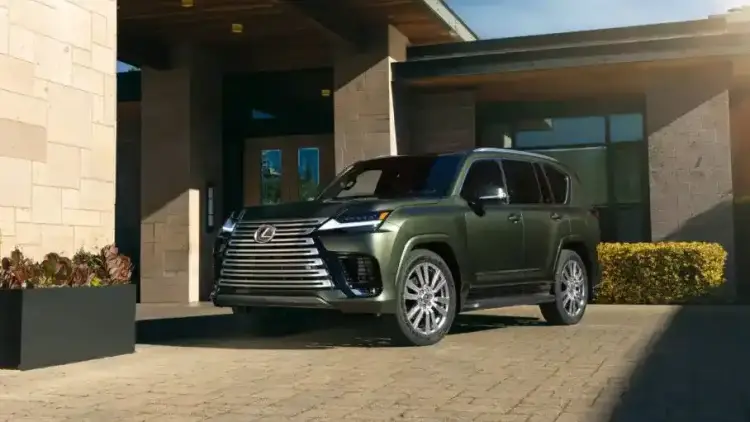- Why Choose the Ashok Leyland Falcon School Bus?
- Specifications of Ashok Leyland Falcon School Bus
- Benefits of Using the Ashok Leyland Falcon School Bus
- How to Choose the Right Ashok Leyland Falcon School Bus
- FAQ
The Ashok Leyland Falcon School Bus is a top choice for schools seeking reliable and safe transportation for students. With its combination of durability, fuel efficiency, and comfort, it's no wonder this bus is trusted by schools worldwide. This guide will help you discover everything about the Falcon School Bus, including features, benefits, and tips for choosing the right model for your needs.
Why Choose the Ashok Leyland Falcon School Bus?
Choosing the right school bus is not just about transporting students — it's about ensuring their safety, comfort, and an efficient commute. Ashok Leyland understands these priorities and has designed the Falcon School Bus to meet every requirement. Known for producing strong and reliable vehicles, the brand has established itself among institutions and educational facilities globally.
The Falcon School Bus offers advantages that go beyond basic transportation:
Reputation for Excellence: Ashok Leyland is recognized for its durable buses designed to last for years.
Specialized Design: Crafted specifically for school usage, the Falcon ranges include features aimed at efficiency and student safety.
Global Trust: Trusted by schools from various parts of the world for its reliability and affordability.
Key Features of the Ashok Leyland Falcon School Bus
The Falcon School Bus stands out with its set of tailored features that aim to make student travel safe, comfortable, and cost-effective.
1. Safety Features
Ensuring the safety of young passengers is one of the primary considerations:
Reinforced body structure to withstand impact and ensure longevity.
State-of-the-art anti-lock braking systems (ABS) for better control on the road.
Emergency exits and onboard fire extinguishers to accommodate unforeseen situations.
2. Comfort for Students
Designed with student-friendly interiors:
Spacious seating arranged ergonomically to reduce fatigue on long commutes.
Availability of air-conditioned models for optimum comfort in hot regions.
Wide windows that promote airflow and a clear outside view for young passengers.
3. Efficiency and Durability
Engineered to deliver a cost-effective and seamless experience:
Diesel engines renowned for fuel efficiency, cutting down daily operational costs.
Smooth maneuverability and drivability suited for both urban streets and suburban routes.
Easy access maintenance and high-quality, long-lasting components that reduce servicing needs.

Additional Features
GPS tracking systems to monitor bus routes and location.
CCTV systems to ensure onboard student safety.
Specifications of Ashok Leyland Falcon School Bus
While the specifications can vary depending on region, the Falcon School Bus lineup typically incorporates the following:
Specification | Details |
|---|---|
Seating Capacity | Ranging from 32 to 60 passengers |
Engine Type | Diesel; meets emissions standards |
Transmission | Options for manual or automatic |
Exterior Dimensions | Compact yet roomy; easy to navigate cities and rural roads |
Additional Features | GPS and CCTV system capabilities |
Benefits of Using the Ashok Leyland Falcon School Bus
Schools that invest in Ashok Leyland Falcon School Buses gain long-term advantages. Some of the standout benefits include:
Unmatched Reliability: Built to withstand adverse terrain, the bus does not compromise on consistent performance.
Cost Savings: Affordable base pricing coupled with a focus on fuel efficiency reduces operating expenses.
Eco-Friendly Compliance: Designed in line with modern-day emissions protocols to fulfill environmental standards.
Flexible Options: Available in different models for variable capacities, climate utilities, and security upgrades.
How to Choose the Right Ashok Leyland Falcon School Bus
Finding the perfect model for your school’s transportation requirements requires careful thinking. Here's a step-by-step guide:
1. Passenger Capacity
Evaluate the number of students you need to transport on a daily basis. Ashok Leyland's Falcon buses offer seating choices from 32 to 60 seats to meet different institutional needs.
2. Regular Routes and Terrain Type
Consider the geographic and terrain-specific challenges your routes might face:
Opt for high-performance models if navigating rural, hilly, or less-developed areas.
Choose models tuned for urban driving if the bus primarily operates in cities.

3. Prioritizing Budget and Features
Features such as air-conditioning, CCTV cameras, and GPS tracking systems depend on budget allocations. Set your priorities to choose a bus that balances cost-effectiveness with convenience and advanced features.
FAQ
What is the seating capacity of the Ashok Leyland Falcon School Bus?
The seats can accommodate between 32 and 60 passengers depending on the model selected.
Is the Ashok Leyland Falcon School Bus suitable for schools in hot regions?
Absolutely, it includes air-conditioned models designed to cope with extreme heat while ensuring passenger comfort.
Does the bus feature advanced technology like GPS tracking?
Yes, the Falcon lineup includes options for GPS tracking and even CCTV systems to monitor movement and safety.
How fuel-efficient is the Ashok Leyland Falcon School Bus?
The bus is equipped with engines that are optimized for fuel efficiency, leading to lower costs over extended periods.
Is the Falcon School Bus compliant with emission standards?
Yes, it adheres to strict emission regulations, making it eco-friendly for both urban and rural usages.
By choosing the Ashok Leyland Falcon School Bus, schools ensure a secure and dependable transportation solution tailored to the needs of students and operators. With a blend of safety, efficiency, and comfort-focused features, it proves to be a smart investment for institutions prioritizing student welfare.
Read More:
Corolla 2011: Is It Still a Great Choice in 2025?
Price of Petrol in Dubai: What You Need to Know
2019 Hyundai Elantra Dimensions:Why This Compact Sedan Still Matters in 2025














